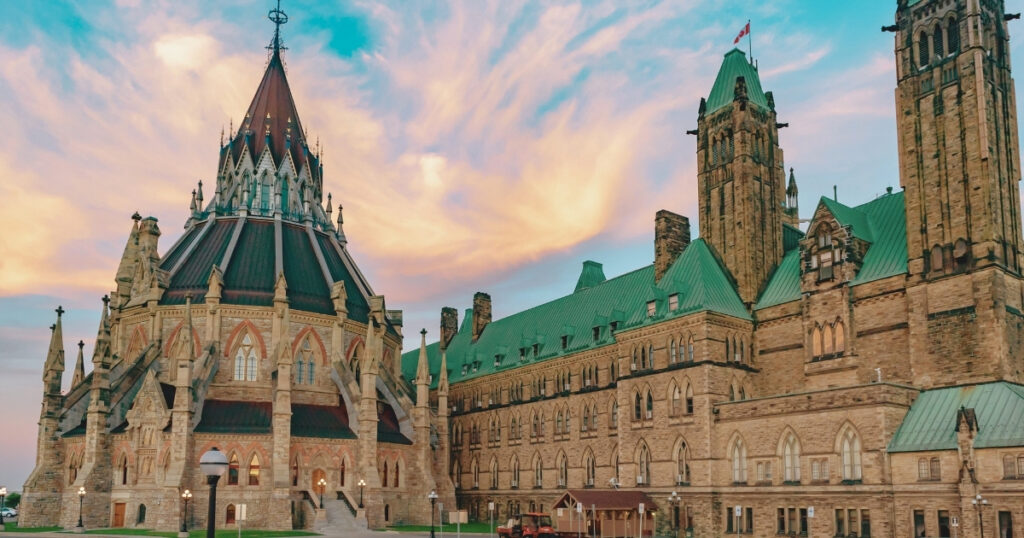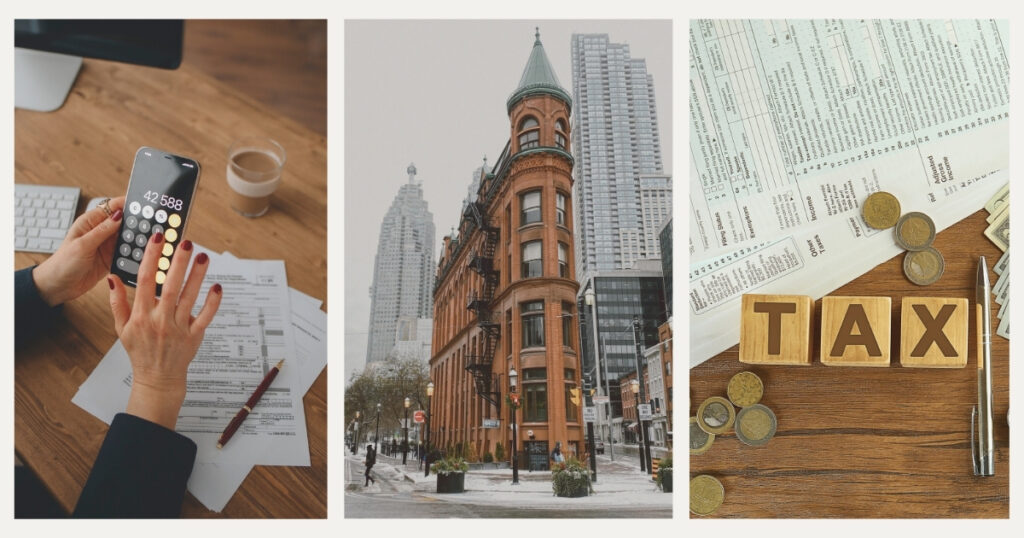Navigating income tax regulations in a foreign country can be overwhelming, especially for location-independent professionals. When it comes to income tax in Canada for foreigners, understanding your obligations is crucial to avoid penalties while enjoying the country’s stunning landscapes and high quality of life.
Canada has become increasingly popular among digital nomads, drawn by its excellent healthcare system, diverse cities, and natural beauty. However, the Canadian tax system has several unique aspects that foreigners must understand to properly manage their tax responsibilities.
Whether you’re planning a short working stay or considering a longer-term relocation, this guide will help you navigate income tax in Canada for foreigners with confidence.
Understanding tax residency in Canada

The foundation of income tax in Canada for foreigners starts with determining your residency status. Canadian tax regulations distinguish between resident and non-resident taxpayers, with significant differences in tax treatment.
Determining your Canadian tax residency status
Canada determines tax residency primarily through the concept of “residential ties.” Unlike countries that rely solely on physical presence tests, Canadian authorities consider various factors. Primary residential ties include maintaining a home in Canada, having a spouse or dependents in Canada, and possessing personal property like vehicles. Secondary ties include Canadian bank accounts, credit cards, health insurance, and driver’s licenses.
The Canada Revenue Agency (CRA) also applies a “183-day rule,” but not as the sole determinant. If you spend 183 days or more in a calendar year in Canada, you may be considered a “deemed resident” for tax purposes, but your residential ties are still considered.
🌟 Pro tip: carefully document your entry and exit dates, maintain your foreign residential ties, and consult with a tax professional before your stay reaches the 183-day threshold to avoid unexpected tax residency status.
Non-resident vs. resident tax obligations
Non-residents generally pay Canadian income tax only on income earned from Canadian sources. This includes employment income earned while physically working in Canada, income from a business carried on in Canada, and certain investment income from Canadian sources.
Residents, including deemed and factual residents, are taxed on their worldwide income, regardless of where it is earned. This means that as a resident for tax purposes, you must report all income from both Canadian and foreign sources.
💡 Did you know? Canada has tax treaties with over 90 countries designed to prevent double taxation. These treaties may offer relief if you’re liable for tax in both Canada and another country, typically through foreign tax credits.
Canadian income tax rates and structure

Canada employs a progressive tax system with different rates at the federal and provincial/territorial levels. Understanding this two-tiered system is essential for calculating your potential tax liability.
Federal and provincial tax rates
The Canadian income tax system consists of federal taxes applied across the country and provincial/territorial taxes that vary by region. Federal income tax rates for 2023 range from 15% on the first $53,359 of taxable income to 33% on portions exceeding $236,540.
Provincial and territorial tax rates are added on top of federal rates and vary significantly. For example, British Columbia’s rates range from 5.06% to 20.5%, while Quebec’s range from 15% to 25.75%. This means your total tax rate can vary substantially depending on which province or territory you establish residency in.
For digital nomads, this provincial variation presents strategic opportunities. Provinces like Alberta and Saskatchewan generally have lower tax rates than Quebec and Nova Scotia, which could influence your decision about where to base yourself.
Tax-free thresholds and credits
Canada offers various tax credits and deductions that can reduce your overall tax burden. The basic personal amount is a non-refundable tax credit that effectively creates a tax-free threshold. For 2023, this amount is $15,000 at the federal level, meaning you pay no federal income tax on earnings up to this amount.
Provinces and territories also have their own basic personal amounts. Additionally, Canada offers specific tax credits that may benefit digital nomads, including deductions for workspace expenses if you qualify for the home office deduction.
🌟 Pro tip: if you maintain a dedicated workspace in your Canadian accommodation, keep detailed records of your workspace size relative to your total living space, as these records may support claiming home office deductions if you qualify as a self-employed individual.
Foreign income considerations
For digital nomads working for foreign clients while physically in Canada, income tax treatment depends on your residency status. If you’re deemed a Canadian resident for tax purposes, you must report worldwide income, although foreign tax credits may be available to prevent double taxation.
Non-residents generally don’t pay Canadian tax on foreign-source income. However, income is typically considered earned where the work is physically performed, not where the client is located. This means that even with foreign clients, income earned while working within Canadian borders may be considered Canadian-source income.
Filing tax returns as a foreigner in Canada

Understanding the practical aspects of filing income tax returns in Canada is crucial for foreigners working remotely in the country.
Tax filing requirements and deadlines
The Canadian tax year follows the calendar year, with tax returns typically due by April 30 of the following year. Self-employed individuals have until June 15 to file, though any taxes owed are still due by April 30 to avoid interest charges.
Foreigners with Canadian-source income or who are deemed residents must file a Canadian tax return if they owe tax or if the CRA requests a return. Even with a relatively short stay, you may need to file if you earned income while physically in Canada.
For digital nomads who travel frequently, staying connected during tax season is essential. A reliable eSIM solution from Holafly ensures you maintain seamless connectivity across provinces and remote areas in Canada, allowing you to access tax documents and submit returns regardless of your location.
Documentation and record-keeping
Proper documentation is crucial for accurate tax filing. Foreign digital nomads should maintain detailed records of their:
- Entry and exit dates from Canada
- Income earned while physically in Canada versus abroad
- Tax residency status in other countries
- Foreign taxes paid (for potential foreign tax credit claims)
- Business expenses related to income earned in Canada
- Employment contracts or client agreements
- Banking statements showing income sources
🌟 Pro tip: create a dedicated digital folder for your Canadian tax documentation, including screenshots of your calendar showing your physical location each day of the year, which can be invaluable for determining where income was earned.
Special considerations for digital nomads in Canada

Digital nomads face unique tax situations in Canada that differ from those of traditional expatriates or visitors.
Self-employment tax Implications
Many digital nomads operate as self-employed professionals, which carries additional tax considerations in Canada. Self-employed individuals must pay both portions of Canada Pension Plan (CPP) contributions, currently totaling 11.4% of net business income up to the annual maximum.
Self-employed individuals can deduct legitimate business expenses from their income, potentially reducing their taxable income. These may include workspace costs, professional development, software subscriptions, and equipment purchases.
Quebec operates its own pension plan (QPP) with similar contribution requirements, so digital nomads based in Quebec will contribute to QPP instead of CPP.
Provincial health insurance considerations
Canada’s healthcare system is primarily funded through taxation, with each province administering its own health insurance plan. For digital nomads, accessing provincial health coverage typically requires establishing residency and completing a waiting period, which varies by province but is often around three months.
During this waiting period, private health insurance is strongly recommended. Additionally, maintaining health coverage in your home country can provide important continuity when traveling between Canada and other destinations.
Final thoughts on income tax in Canada for foreigners
Understanding income tax in Canada for foreigners requires attention to detail and proactive planning. While Canada’s tax system presents certain complexities with its two-tiered structure and residency-based approach, it also offers clarity through well-established guidelines.
The key to successful tax management in Canada lies in accurately determining your residency status, understanding the source of your income, maintaining meticulous records, and seeking professional advice when needed. By taking these steps, digital nomads can confidently navigate Canadian tax obligations while enjoying the country’s exceptional quality of life.
For those considering Canada as part of a larger nomadic journey, proper tax planning is not just about compliance—it’s about optimizing your financial situation across multiple jurisdictions and creating the freedom to focus on meaningful work and experiences.
For comprehensive guidance on managing taxes in multiple countries, check out our global tax planning strategies for digital nomads article, which covers complementary approaches to optimizing your international tax situation.
Navigate Canadian tax waters confidently while embracing your nomadic lifestyle with Nomada 👉
Frequently asked questions about income tax in Canada for foreigners
If you earn income while physically working in Canada, you may need to file a return regardless of your length of stay. The obligation depends on whether you have Canadian tax liability, not just the duration of your visit.
Generally, income earned while physically working in Canada is considered Canadian-source income and may be taxable, regardless of whether your clients are foreign. Your tax residency status determines if you’re taxed on worldwide income or just Canadian-source income.
Canada uses foreign tax credits and tax treaties to prevent double taxation. If you’ve paid foreign taxes on income that’s also taxable in Canada, you may claim a foreign tax credit on your Canadian return.
Non-residents typically file the T1 General Income Tax and Benefit Return with a completed Schedule A (Statement of World Income). Additional forms may include the T2209 Federal Foreign Tax Credits form if applicable.
Self-employed digital nomads can generally claim legitimate business expenses directly related to earning income in Canada, including workspace expenses, equipment, and software, though specific eligibility rules apply.




